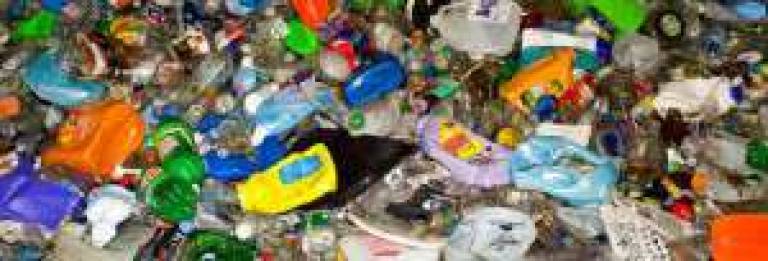New York City's Trash: Where it goes, how it gets there and what the city is doing to change how we recycle it

The sleek, glassy Bank of America Tower is one of New York City's tallest buildings, one of its most energy-efficient structures and perhaps the country's most ecologically friendly skyscraper. It is also on the cutting edge on a less glamorous front: getting rid of its trash. The Durst Organization, the powerful real estate company and the developer of the Bank of America Tower, is doing all it can to minimize the building's waste and keep it out of landfills. It all starts with the office workers. At Durst's headquarters on the building's 49th floor, the trash bins next to each desk are only for paper. None of the receptacles have plastic liners, a reminder to keep out any food or liquids. Pizza crusts, apple cores and half-eaten bagels have to be carried to a break room, where employees deposit them in wooden compost buckets. Empty water bottles, soda cans and glass go into a separate can. Any remaining garbage is dumped into yet another can. Lisa Cintron, a Durst quality-control manager, said it was an adjustment to take her trash to the break room instead of throwing everything away right at her desk. "Since you get up and you're already there, you say, 'Well, I might as well do the right thing and throw it in the right place,' " she said. "It was definitely inconvenient for people and hard to adjust initially, just the thought, but it really didn't take much to adjust." The on-site sorting, done on all but a couple of floors at the Bank of America Tower and at a number of other Durst buildings, is just the start of the journey for each piece of trash. Food refuse is shipped to the Durst family's composting farm two hours north of the city. Paper, cardboard and plastics are shipped overseas to be broken down and remade into new products. Much of the remaining trash is burned in an incinerator. Only a fraction of the garbage is buried underground. Helena Durst, a Durst vice president spearheading the company's efforts to minimize trash and maximize recycling, said it's all about setting an example in a city trying to boost its recycling. "It's not a moral thing," Durst said. "It's an economic driver, and it's an imperative for the environment. It's the government's imperative to be able to put the infrastructure in place so that we can all easily follow it." * * * Around 5 p.m. on a sunny day in March, the cleaning crews show up at the Bank of America Tower for the evening shift. Ljubica Martic arrives on the 49th floor, still lit by the fading sunlight, to tidy up the upscale corporate offices and cubicles, vacuum the floors and take out the trash. As a few employees wrap up their work and head for the elevators, Martic steps into a deserted break room with a sweeping view of the Empire State Building, the Statue of Liberty and the harbor beyond. She scoops up an empty Starbucks coffee cup on a table and drops it into a plastic bag. "We throw recycled paper here, garbage here, and we always use blue plastic bags in case we find cans or water bottles," she says, snatching up other bits of trash from the table and dropping them into their designated cans. "Here, it's more strict." She yanks several half-filled bags and lugs them down the hallway to the freight area, where she drops them next to an elevator. Just before 7 p.m., the elevator doors open, and out steps a young Durst employee sporting a light blue work shirt and a mohawk. He loads the garbage into 55-gallon wheeled tubs, and the elevator descends to the ground floor. At the loading dock, the bags are tossed from the tubs onto the empty concrete floor. By midnight the dock is filled with hundreds and hundreds of bags. To read the full article at City & State [click here](http://www.cityandstateny.com/trash/).